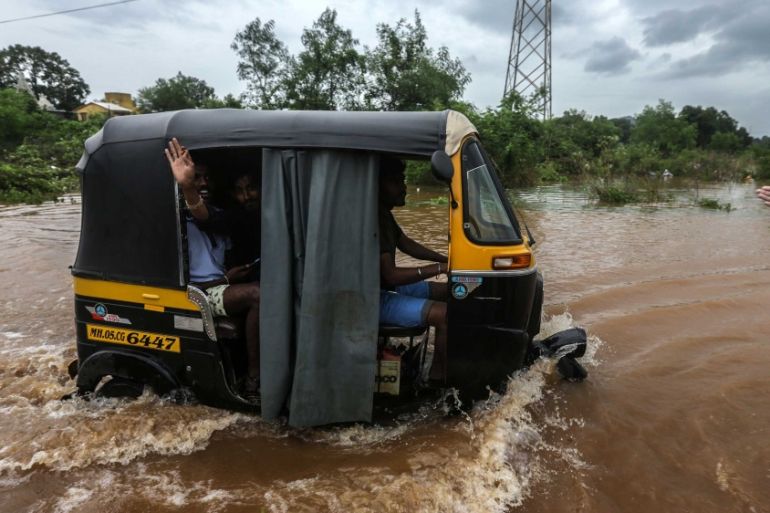India’s monsoon flooding more erratic and the season weaker
As the Mahalaxmi Express train is stranded again, Chennai has run out of water and the Thar desert sees flash flooding.

The average rainfall for every region of India is deficient, according to the India Meteorological Department (IMD).
Measuring from June 1, the overall deficit is 16 percent. Maybe more tellingly, 56 percent of the land area of India is short of the expected fall for this point in an “average” season.
Keep reading
list of 4 itemsAfter the Hurricane
World’s coral reefs face global bleaching crisis
Why is Germany maintaining economic ties with China?
But as in every year, there are areas of severe floods and areas of persistent drought. In the northeast, the wettest place in the world, the Brahmaputra River has burst its banks. In the west, Mumbai saw 11 days of monsoon rain in 24 hours, and the Mahalaxmi Express train from Mumbai to Kolhapur was stranded, amid floods, just outside Mumbai on Friday.
The states of Maharashtra and Karnataka have had excessive rain this year but they are the exception, not the rule. Mumbai itself exceeded its average in both June and July, with figures of 123 percent and 151 percent, respectively.
Yet Chennai has run out of water and has hope only for proper rain from the receding monsoon rains in September. This is despite a lucky 167mm of rain in July, not enough to top up the dry reservoirs, but 161 percent of what is usually a meagre month anyway.
|
|
The southwest monsoon started late this year, and has so far been disappointing. The monsoon front was late in reaching the mainland and erratic in crossing. It accelerated during July and reached Pakistan only four days behind average.
Significant shortages
Until recently almost the only rain that has fallen over the bulk of India came either with pre-monsoon thunderstorms or downpours on the advancing front. That is not to say there has been no flooding and landslides – indeed there have. As is always the case, monsoon rain falls heavily in some places and not at all in the unfortunate others.
Given the rate of fall of monsoon rain, it may not be possible to catch up with useful rain as much of the water may run off into rivers rather than soak into the earth. All of the monsoon seasons since 2014 have been deficient. Years 2014 and 2015 as a sequential pair were the first deficient pair in 115 years and both recorded less than 90 percent of normal rainfall. That is a significant shortage.
The answer to this persistent “below average” run of monsoon seasonal rain? Change the average!
This is normal and actually a regular normalisation of the database. Quoted in the Financial Times, Sivananda Pai, head of climate research and services at the India Meteorological Department, said the agency was preparing to lower its long-period average of the amount of rainfall recorded during a normal monsoon by “around 1-2cm” as part of a once-in-a-decade update to its baseline.
The IMD’s current average is 89cm, based on monsoons between 1960 and 2010, while the new one will span the 50 years to 2020. Despite the drop in the average rainfall during the monsoon season, IMD expects “regional variation in rainfall to increase substantially”, driven in part by the worsening effect of climate change in India.